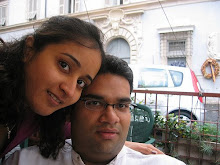South America Review
It's been just over 100 days since we arrived into South America. It was the first time that I had been to the continent (apart for a short stint in Guyana during the last cricket world cup), and we have seen and experienced quite a bit. So as I sink back in my seat on the flight from Quito to panama and then on to Mexico, I have been reflecting on some concluding thoughts about the vast continent and our time there.
I guess the first thing to say is exactly that - the continent is huge!!! We flew down to Ushuaia which is right at the very tip of South America, and from there I travelled by bus right up to Quito, Ecuador. Non stop this would take me about a week. That's a long time!!! The continent straddles the equator and there is just a variation in the natural environment as you progress up.
Although the distances maybe vast to my mind the variation in the cultures was not as immense or marked. Sure there are variations on the main themes, but across the large tract of Spanish speaking South America I was struck by how similar culturally the countries felt to me. Also (and comparisons are notoriously dangerous) not only did the cultural variations seem slight but the culture it self was a little same same. Ancient cultures (that by Asian standards were not ancient), succeeded by Spanish colonialism and then modern independence. And then what...? I know this is a controversial opinion but, I am just saying what I felt! Of course having essentially one language across most of the land mass and a common colonial past helps to bring the cultures together, and also gives rise to a little bit of this same same feeling.
Where I might have been a tad underwhelmed by the culture texture of South America, one cannot help but be blown away by its natural richness. On the natural beauty front this place rocks. You have Patagonia in the south, with mind blowing glaciers, wilderness walking and mountains with forms that you can't comprehend. Then there is the lake l
District belt, all leafy, flowers everywhere and glistening lakes aplenty. The Andes range may not be as high as the Himalayas, or host the royal family of tall mountains (all 102 of them) but they are dramatic, challenging and home to an amazing range of tribes and mountain people.
By far the most famous natural superstars in South America are the Amazon river and the surrounding rain forests. Nature is what sets South America apart from the rest of the pack. It is another world, trekking through the sticky noisy rainforest, just seeing life teem all around you; it is really mind blowing how much life surrounds you there. The variety and dramatic vistas constantly amazed us. How nature has constructed such beauty in so many ways in truly inspiring and I haven't even mentioned the Galapagos or Antarctica yet!!!
Nature - South America rocks!!!!
Related to the richness of nature is the wealth of outdoor pursuits you can enjoy here. Of course places like New Zealand are well known for the abundance of outdoors excitement, but South America easily rivals any place on earth I can think of. World class trekking, glacier walking, river pursuits, diving, mountain climbing - anything you can think of.
South America was an awesome traveler’s destination. The countries felt to me a little same same but different, but it is full of fun, fantastic sounds and colours. People are friendly and welcoming and we enjoyed it hugely. Urvi found a special niche in Buenos Aires and I have no doubt she will be back there sometime. We will return to South America to do justice to Peru and Bolivia as of course, as ever, we have just scratched the surface of this fascinating continent.
























